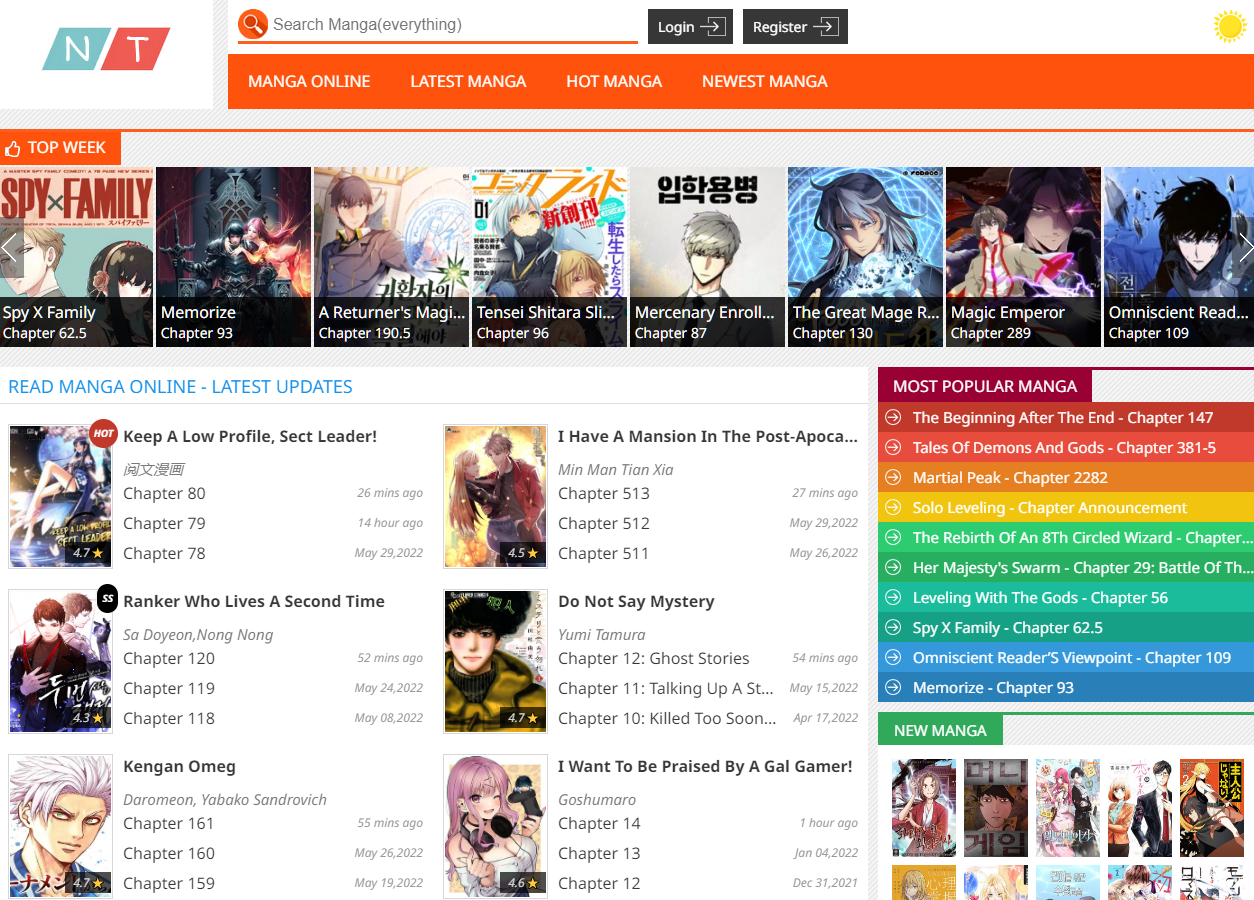Product description
: Identify the central conflict driving the story. Conflict is the heartbeat of any narrative, and clarifying this aspect can pique reader interest.
The Role of Manga Summaries in Digital Media
With the rise of digital platforms, the consumption of manga has transformed significantly. Summaries have adapted to fit the online landscape, becoming more crucial than ever.
The Rise of Online Manga Platforms
Digital platforms have democratized access to manga, allowing readers worldwide to explore diverse titles. Websites and apps offer extensive libraries, but navigating these collections can be daunting. Here, the manga summary gimmick shines again – aiding readers in filtering through countless options to find stories that resonate.
Summaries are prominently featured on these platforms, often displayed alongside cover art and ratings. This accessibility allows readers to quickly gauge whether a series aligns with their tastes, enhancing the overall reading experience.
Social Media and Community Interaction
Social media has revolutionized how readers engage with manga. Platforms like Twitter, Instagram, and TikTok have become spaces for fans to share their thoughts, reviews, and summaries of their favorite series.
The manga summary gimmick plays a role here as well. Short, engaging summaries shared on social media can capture attention, prompting followers to investigate further. Additionally, community interactions allow for varied interpretations, fostering rich discussions that bring a multifaceted understanding to the forefront.
Influencer Culture and Recommendations
The emergence of influencer culture in the manga community cannot be overlooked. Booktubers, Bookstagrammers, and anime reviewers regularly share recommendations and summaries, shaping public perception and driving sales.
These influencers often utilize unique formats to summarize manga, such as video shorts or carousel posts, making the content visually appealing and engaging. Their insights often include personal experiences, connecting emotionally with viewers and establishing trust, thereby influencing their choices in what to read next.
Popular Genres and Their Unique Summary Styles
Different genres within the manga world require distinct approaches when it comes to crafting summaries. Each genre possesses characteristic traits that should be carefully considered in order to effectively convey its essence.
Shonen Manga Summaries
Shonen manga typically targets a young male audience and often focuses on themes of friendship, adventure, and growth. Summaries in this category should emphasize action-packed plotlines and the development of camaraderie among characters.
For instance, summaries of series like "Naruto" or "One Piece" should highlight the protagonists’ quests, their challenges, and the growth they undergo along the way. Engaging language that captures the intensity of battles or the excitement of adventures can attract potential readers.
Shojo Manga Summaries
Conversely, shojo manga caters mainly to a young female audience and often revolves around romance, relationships, and emotional journeys. Crafting summaries for shojo titles should focus on character dynamics and the evolution of love interests.
Summaries for popular series like "Fruits Basket" or "Ouran High School Host Club" should evoke the emotions of the characters, touching on their struggles and triumphs in matters of the heart. Romantic tension and character development are key elements that should shine through.
Seinen and Josei Manga Summaries
Seinen (adult male) and josei (adult female) mangas explore more mature themes, including complex relationships, societal issues, and psychological depth. Summaries for these genres must delve into intricate plots and character studies.
Titles such as "Death Note" or "Nana" demand a careful balance of intrigue and detail. Readers expect more profound explorations of themes, so summaries should reflect the tone and sophistication inherent in these works.
FAQs
What is the purpose of a manga summary?
A manga summary provides a concise overview of a story, encompassing its main characters, plot points, themes, and setting. It serves to guide readers in selecting their next read and helps facilitate discussions within the manga community.
How do I write an effective manga summary?
To write an effective summary, focus on key elements like main characters, conflict, setting, and themes. Use engaging language that matches the story's tone and avoid spoilers to maintain the suspense for new readers.
Are manga summaries necessary for all genres?
While not strictly necessary, manga summaries play a crucial role in helping readers navigate vast collections, especially in digital formats. They cater to different audiences and can enhance the reading experience across all genres.
Can I use summaries for fan discussions?
Absolutely! Summaries can serve as great focal points for fan discussions. Sharing thoughts on a summary can ignite conversations about character motivations, plot developments, and thematic elements, enriching the overall experience.
Where can I find quality manga summaries?
Quality manga summaries can be found on dedicated manga websites, digital platforms, blogs, and social media channels. Engaging communities on social media often share their interpretations and summaries, providing diverse perspectives.
Conclusion
The manga summary gimmick is more than a mere convenience; it embodies a vital component of the reading experience within the manga community. By capturing the essence of complex narratives in engaging ways, summaries provide value for both seasoned readers and newcomers alike. As the landscape of manga continues to evolve, so too will the strategies used to summarize these captivating stories. Through thoughtful and creative summaries, we continue to celebrate the beautiful art of manga storytelling, enhancing our understanding and appreciation of this incredible medium.
Understanding the Manga Summary Gimmick - An Insightful Exploration
In the realm of storytelling, the Manga summary Gimmick serves as a powerful tool that encapsulates the essence of a narrative within a concise framework. This approach to summarizing manga not only aids in comprehension but also enhances engagement with the material, providing readers with a fresh perspective on their favorite stories. As we delve into this topic, we will explore various dimensions of the manga summary gimmick and its significance in the broader context of manga culture.
The Evolution of Manga Summaries
The landscape of manga has undergone significant transformation over the decades. With the advent of technology and changes in consumer behavior, the way manga is consumed has shifted dramatically. Summaries have emerged as essential components in this evolution, serving multiple purposes that transcend mere plot details.
Historical Context of Manga Summaries
Understanding the historical backdrop of manga summaries requires us to take a closer look at how manga first gained popularity. In Japan, manga has been around since the late 19th century, but it wasn’t until the post-World War II era that it truly flourished. During this time, manga magazines began publishing serialized content, allowing for longer story arcs.
As readership expanded, so did the need for summaries. Readers often found themselves overwhelmed by the sheer volume of available titles. Summaries provided a way to navigate this ocean of content, allowing readers to make informed decisions about what to read next. Thus, the manga summary gimmick was born out of necessity, evolving from simple synopses to more intricate and engaging narratives.
Functionality of Manga Summaries
A well-crafted manga summary serves several functions. It is not just a mere retelling of events; it encapsulates themes, character motivations, and stylistic elements that define a work. Summaries can serve as gateways to understanding complex narratives or exploring unique genres.
Furthermore, they appeal to both new and seasoned readers alike. For newcomers, summaries provide an accessible entry point into the world of manga, breaking down intricate plots into bite-sized pieces. For experienced readers, summaries can reignite interest in a series or spark conversation about deeper interpretations of the narrative.
Impact on Reader Engagement
Engagement is crucial in any form of storytelling, and manga is no exception. The manga summary gimmick plays a pivotal role in maintaining reader interest. By distilling the essence of a story, summaries entice readers to dive deeper into the full work, luring them with intriguing hooks and emotional stakes.
Moreover, summaries foster community discussions and analyses among fans. When readers share their thoughts on a series’ summary, it cultivates a shared language and understanding within the manga community. This interaction not only promotes engagement but also generates excitement around upcoming releases, creating a dynamic ecosystem of discussion and appreciation.
Crafting Effective Manga Summaries
Creating a compelling manga summary goes beyond simply outlining events. It requires a nuanced understanding of the story's core elements and the ability to convey them succinctly and engagingly.
Key Elements of a Good Summary
An effective manga summary should cover several key elements:
- Main Characters
Tone and Style Considerations
The tone and style of a manga summary are equally important. Depending on the genre - whether it’s shonen, shojo, seinen, or josei - the language employed should match the intended audience. A lighthearted series may benefit from a playful tone, while a dark, introspective narrative might call for a more somber approach.
Additionally, summaries should aim for brevity without sacrificing richness. Striking the balance between concise language and evocative imagery can enhance a summary's appeal. Engaging summaries create a sense of intrigue, encouraging potential readers to explore the full story.
Common Mistakes to Avoid
Crafting summaries is an art form, and there are common pitfalls writers should be wary of:
- Over-Simplification: Providing too much information can ruin the experience for new readers. Aim to tease essential plot points without revealing critical twists or outcomes.
- Lack of Originality: Describe the world in which the story takes place. Whether it's a fantastical realm or a modern-day city, the setting shapes the narrative and influences the tone.
- Conflict: While brevity is important, oversimplifying a narrative can strip it of its nuance. Avoid reducing complex characters or conflicts to one-dimensional descriptions.
- Spoilers: Introduce the protagonists and antagonists, highlighting their motivations and relationships. Readers connect with characters, making it essential to showcase their journeys.
- Setting







